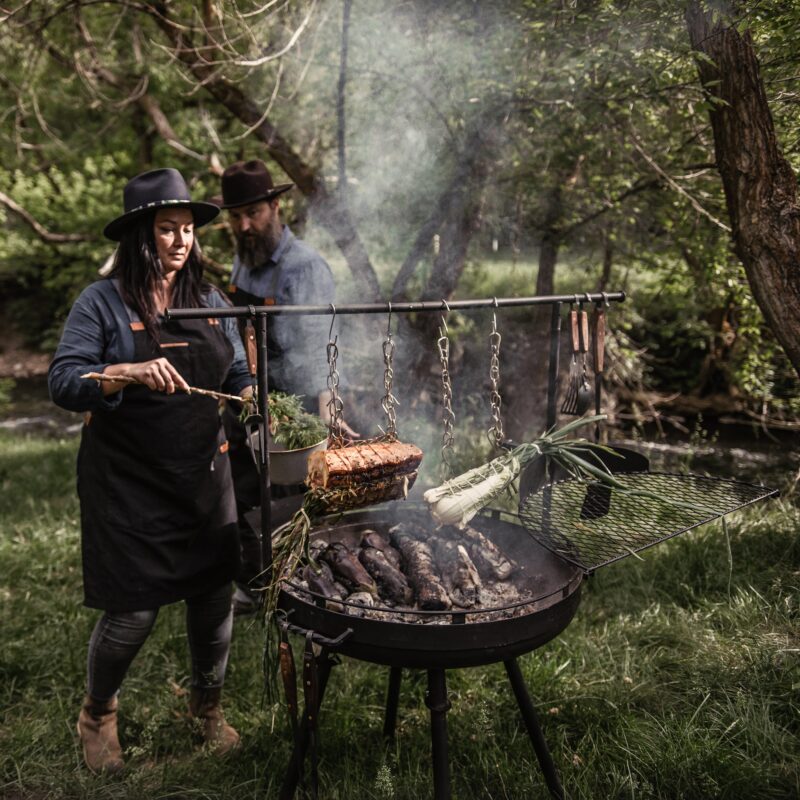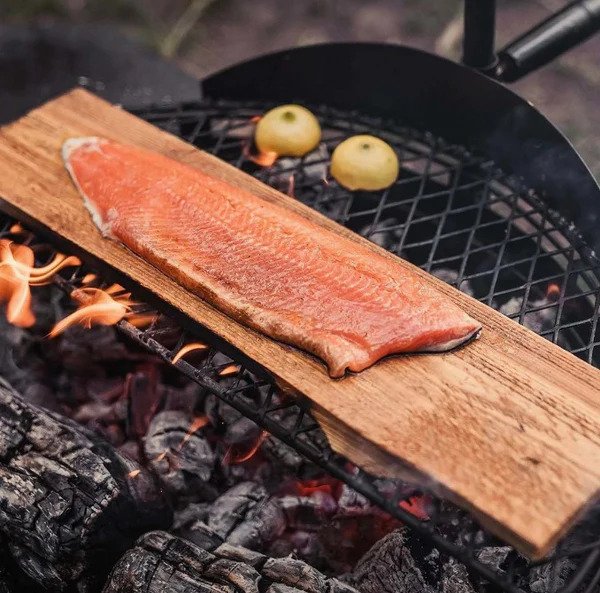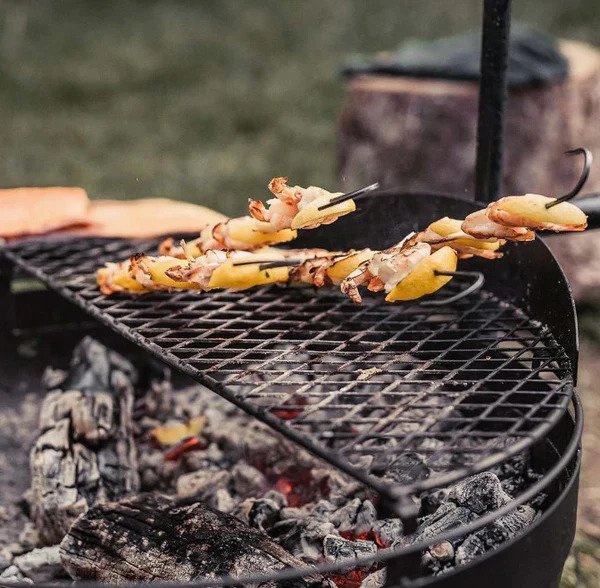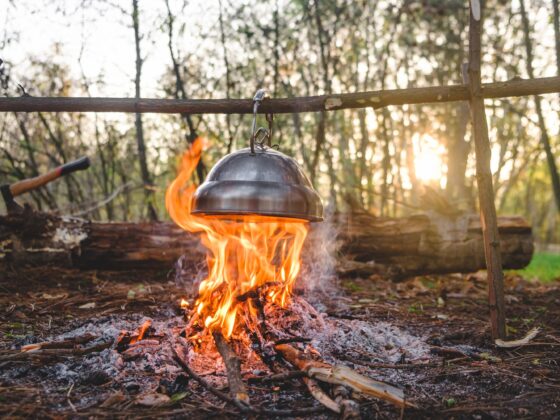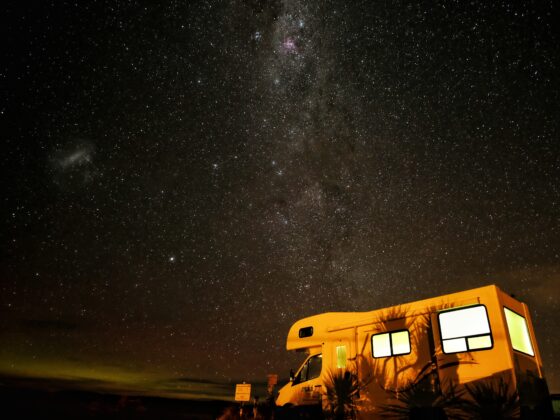Fire pits are a perfect addition to any backyard or outdoor space, providing warmth, ambiance, and a gathering place for friends and family. However, choosing the right fire pit can be overwhelming with so many options available. From size and style to fuel type and material, there are many factors to consider before purchasing.
This article will provide tips and advice to help you choose the perfect fire pit to suit your needs, budget, and personal style.
Benefits of having a fire pit
There’s something magical about sitting around a fire pit, whether it’s with family or friends. It’s the perfect way to relax and unwind after a long day. Fire pits provide warmth, light, and a cozy atmosphere that is truly unmatched. You can extend the outdoor season with a fire pit and enjoy your backyard even on chilly nights. Furthermore, fire pits are versatile and can be used for cooking, roasting marshmallows, or just enjoying the ambiance.
In addition to the entertainment and aesthetic benefits, a fire pit can also increase the value of your home. According to experts, installing a fire pit can add up to 5% to your home’s value. So it’s an investment in your outdoor space and your property. With so many benefits, it’s easy to see why fire pits are becoming increasingly popular.
Different types of fire pits
There are three main types of fire pits: wood-burning, gas-powered, and propane. Each type has advantages and disadvantages, so knowing which is right for you is essential.
Wood-burning fire pits are the most traditional and offer an authentic campfire experience at any campsite near Manila. They’re usually less expensive than gas-powered fire pits and require less maintenance. However, wood-burning fire pits require a ready supply of firewood and can produce a lot of smoke.
Gas-powered fire pits are easy to use and require no cleanup. They’re also more eco-friendly and produce less smoke than wood-burning fire pits. However, they’re more expensive and require installing a gas line.
Propane fire pits are also easy to use and require no cleanup. They’re more portable than gas-powered fire pits and can be moved around your backyard. However, they require propane tanks and can be more expensive to run in the long term.
Factors to consider when choosing a fire pit
When choosing a fire pit, there are several factors to consider.
The first is size. Fire pits come in various sizes, from small portable ones to large permanent installations. The size you choose will depend on the size of your backyard and the number of people you plan to entertain.
Material is another important factor. Fire pits can be steel, cast iron, copper, or stone. Steel fire pits are durable and low-maintenance but can rust over time. Cast iron fire pits are also durable but heavy and require more maintenance. Copper fire pits look great and develop a natural patina over time, but they can be expensive. Finally, stone fire pits are a popular choice for a rustic look, but they can be heavy and difficult to move.
Location is also important. Fire pits should be placed on a flat surface away from trees or other flammable materials. They should also be at least 10 feet away from any structures, including your house.
Safety measures to take when using a fire pit
Safety is paramount when using a fire pit. You should always have a fire extinguisher near your camping tent in case of emergency. Children and pets should always be supervised, and you should never leave a fire unattended.
It’s also essential to use the right fuel for your fire pit. Only use dry, seasoned firewood if you have a wood-burning fire pit. Never use pressure-treated wood, which can release toxic chemicals when burned. If you have a gas-powered fire pit, ensure it’s installed by a professional and the gas line is connected correctly.
Finally, make sure your fire pit is covered when not in use. This will prevent rain, snow, and debris from accumulating inside the fire pit.
Maintenance tips for your fire pit
Proper maintenance is essential to ensure your fire pit lasts for years to come. If you have a wood-burning fire pit, clean out the ash regularly. This will prevent it from building up and potentially starting a fire. If you have a gas-powered fire pit, check the gas line for leaks and make sure the burner and igniter are clean.
Regardless of your fire pit type, protecting it from the elements is important. Cover it when not in use to prevent rust and decay.
Budgeting for a fire pit
Fire pits come in a range of prices, from a few hundred dollars to several thousand. The cost will depend on the type of fire pit you choose and the size and material. In addition to the cost of the fire pit itself, you should also factor in the installation cost. For example, gas-powered fire pits require a professional to install the gas line, which can add to the cost.
When budgeting for a fire pit, consider the long-term costs. Wood-burning fire pits will require a steady supply of firewood, which can add up over time. Gas-powered fire pits will require regular propane tank refills, which can also be costly.
Barebones Living: A popular fire pit brand to consider
Many fire pit brands are on the market, each with unique features and styles. However, Barebones Living Cowboy Fire Pit Grill is among the best fire pits available today.
The Barebones Living Cowboy Fire Pit Grill is a versatile outdoor cooking solution that lets you enjoy good food and warmth while camping or spending time in your backyard. Here are some pros and cons to consider before you buy:
Pros:
- The design is stylish and modern, with durable steel construction that withstands high temperatures and outdoor elements.
- The Barebones Living Grill Grate is easy to assemble and disassemble, with a simple yet effective system that lets you switch between grilling and fire pit modes in minutes.
- The cooking surface is ample, with enough space to cook for up to four people at the same time. You can adjust the height of the grill grate to control the heat and the cooking style.
- The fire pit mode is perfect for roasting marshmallows, keeping warm, or creating an ambiance of rustic charm. The mesh lid keeps the embers contained and prevents sparks from flying out.
- The grill comes with a carry bag and a cooking tool set with a spatula and a fork.
Cons:
- The price is higher than other fire pit grills on the market, which may put off budget-conscious buyers.
- The grill grate is relatively thin and may warp over time if exposed to extreme heat or pressure.
- The Barebones Living Grill Grate Extension Legs are not adjustable, which can be problematic if you cook on uneven ground. You may need to use shims or rocks to level the grill.
- The grill grate is not removable, which makes cleaning more challenging. You may need a wire brush or a scraper to remove stubborn food residues.
Overall, the Barebones Living Cowboy Fire Pit Grill is an excellent choice for anyone who loves to cook and relax outdoors. It offers a good balance of functionality, durability, and style and is easy to use and maintain. Despite minor drawbacks, it’s a solid investment that will pay off in many enjoyable moments spent around the fire.
Conclusion
Choosing a fire pit for your outdoor space can be daunting, but you can make an informed decision with the correct information. First, consider the type of fire pit you want, the size and material, and the location. Next, take safety measures when using your fire pit and maintain it properly to ensure it lasts for years. Finally, factor in the cost of the fire pit itself as well as installation and long-term fuel costs. These tips allow you to choose the perfect fire pit for backyard gatherings or camping adventures.

